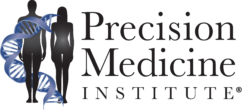Certain non-invasive prenatal screening tests are leading to pregnancy-related decisions based on incorrect results, FDA confirms
Following a recent investigation by The New York Times, the US Food and Drug Administration (FDA) has issued a safety communication warning that certain non-invasive prenatal screening (NIPS) tests may be providing false results.
In its safety communication, the FDA said, “The accuracy and performance of NIPS tests have not been evaluated by the FDA and these tests can give false results, such as reporting a genetic abnormality when the fetus does not actually have one.”
NIPS is a form of genetic testing that uses blood from a pregnant mother to evaluate fragments of fetal DNA that are mixed in with the maternal blood. This method of testing allows for discovery and evaluation of genetic abnormalities in the developing fetus. Expectant mothers use this information to learn if their child will have genetic abnormalities.
However, according to the FDA, NIPS has been shown to provide false results that may result in misinformed clinical decisions. Healthcare leaders should be aware of this potential for false results and the impact it can have on their patients.
Abortions Based on False Positive Test Results
NIPS has been seen as a tremendous advancement in maternal medicine, allowing expectant parents to anticipate rare diseases prior to birth and to prepare for the challenges of caring for a child who has developmental delays.
Prior to NIPS, testing fetal DNA involved amniocentesis, an invasive procedure to collect cells from inside the womb.
While the use of NIPS testing has been increasing, the New York Times article has called into question both the utility and ethics behind this form of genetic testing.
According to Times data, key prenatal test results for rare diseases were frequently incorrect. The genetic tests with the highest false-positive rates noted in the Times report include:
- DiGeorge syndrome—81% false positive rate.
- 1p36 deletion syndrome—84% false positive rate.
- Cri du chat syndrome—80% false positive rate.
- Wolf-Hirschhorn syndrome—86% false positive rate.
- Prader-Willi syndrome—93% false positive rate.
- Angelman syndrome—93% false positive rate.
Prenatal Screening Tests Vs. Diagnostic Tests
The Times contextualized these high false positive rates with stories of women who chose to abort their pregnancies based on positive prenatal test results, only to later find that the test results were incorrect.
The journalists acknowledged that NIPS is supposed to be used as a screening test for which follow-up testing is then recommended. What the times highlighted was that follow-up testing carries risk and many patients choose to make decisions based solely on NIPS results.
The New York Times followed up its initial article a week later with a podcast, titled, “Investigating the Prenatal Testing Market: How screenings for chromosomal abnormalities that promised ‘peace of mind’ instead caused anguish and confusion,” which expanded on the initial article’s content.
Following the attention the Times exposé generated, the FDA issued its safety communication, titled, “Genetic Non-Invasive Prenatal Screening Tests May Have False Results.”

In its safety communication, the FDA said, “The FDA is aware of reports that patients and healthcare providers have made critical healthcare decisions based on results from these screening tests alone and without additional confirmatory testing. Specifically, pregnant people have ended pregnancies based only on the results of NIPS tests.
“Without confirming the results with a diagnostic test, there is no way to know whether the fetus actually had the genetic abnormality reported by the screening test,” the safety communication continued. “The FDA is aware of cases where a screening test reported a genetic abnormality and a confirmatory diagnostic test later found that the fetus was healthy.”
FDA Advises Patients to Always Get a Follow-up Diagnostic Test After Prenatal Screening
The FDA issued specific information and recommendations for healthcare providers:
- Follow-up testing is always recommended to confirm a diagnosis.
- The risks and benefits of testing should always be discussed with a patient.
- NIPS alone should not be used to diagnose chromosomal abnormalities or disorders.
- Follow-up testing and care, including genetic counseling, should be made available.
Additionally, the FDA recommended that healthcare providers go over a set of recommendations tailored specifically for patients. These recommendations heavily emphasize that NIPS should not be used for diagnostic purposes.
The FDA concluded the safety communication by warning that they “will continue to closely monitor safety issues around the use of NIPS tests,” indicating that further actions may be taken in the future.
A core tenet of precision medicine includes making genetic-based medical decisions. Thus, the failure of some genetic tests to consistently provide accurate results is highly concerning, especially as medical professionals become more dependent on genetic testing to make important healthcare decisions.
NIPS technology is very different from many forms of genetic testing used in fields outside of obstetrics. It remains unclear if other forms of genetic tests could be susceptible to similar vulnerabilities that lead to misinformed healthcare decisions. Healthcare leaders should be aware that these deficiencies exist and that they could affect consumer confidence in genetic testing.
—Caleb Williams
Related Information:
FDA Warns Patients About Some Prenatal Genetic Tests
American College of Obstetricians and Gynecologists: Non-Invasive Prenatal Testing
When They Warn of Rare Disorders, These Prenatal Tests Are Usually Wrong
Investigating the Prenatal Testing Market
Genetic Non-Invasive Prenatal Screening Tests May Have False Results
